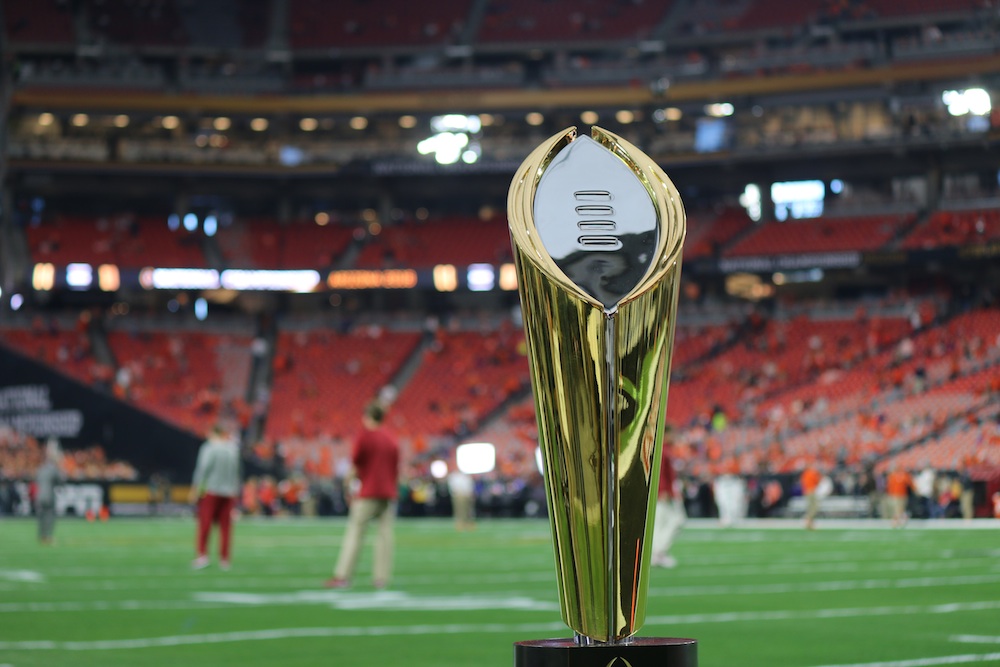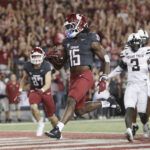Will it make another run at Memphis, South Florida and Tulane? Will it take aim at Texas State or consider Sacramento State? Could it pursue an unexpected course of action?
This much we know: The Pac-12 got the schools it needed — the schools it absolutely had to have — with the four initial additions from the Mountain West (Boise State, Colorado State, Fresno State and San Diego State).
For media and competitive value in football and men’s basketball, that quartet, along with Utah State, has established a bar for the rebuilt conference that won’t materially change based on the identity of the eighth football school.
So what’s next?
Multiple sources have said every option is being explored with an emphasis on financial prudence.
(The Pac-12 declined to engage in a bidding war over UNLV with the Mountain West, for example, and it wouldn’t offer Memphis more than $2.5 million to assist with the Tigers’ $25 million exit fee from the American.)
Whether the next move comes in 24 hours or 24 days, the conference needs a win. And there’s only one school available that can offer a blowout victory.
From here, it’s clear: Go get Gonzaga.
Forget football for the moment.
Forget the need for an eighth full-time member to meet NCAA requirements.
Forget the missed opportunities and the lost narrative and the extended period of uncertainty.
Go get Gonzaga.
It’s tricky. The Zags would prefer membership in the Big 12, but the conference isn’t interested at this point. (The Big 12 doesn’t want Connecticut, either.)
In order to relinquish their dominant position in the West Coast Conference and move into the Pac-12, the Zags would charge a steep price. They would want football revenue even though they don’t play football.
Could the Pac-12’s two current members, Washington State and Oregon State, plus the five schools set to join in the summer of 2026 settle on a price that’s acceptable to their egos and budgets but also works for the Zags?
Again, it’s tricky.
There are three main sources of conference revenue. The largest, by far, is the media rights cash that comes from regular-season broadcasts of football and basketball games. The other streams are distributions from the College Football Playoff and the NCAA Tournament.
Because football typically accounts for 80 cents of every media rights dollar, the seven full-time Pac-12 schools might be wary of handing over a full revenue share to the Zags.
And maybe it’s not a full share. Maybe the Zags don’t receive any cash from CFP distributions but earn a full share of the NCAA Tournament cash and the media rights contract for regular-season broadcasts.
They would be worth it.
The strength of any conference is defined by its media value, and media rights value is based on brands. The SEC and Big Ten are the kingpins because they have the best brands and, therefore, the largest media deals.
The Zags are a basketball brand.
Pair them with San Diego State, which played for the NCAA championship two years ago, and the Pac-12 would have tentpole programs for its basketball product.
The Zags would pack visiting arenas and boost ratings.
They would make the conference more attractive for football-playing schools that value basketball.
Their stature might allow the Pac-12 to explore scheduling partnerships with the Big 12 and ACC.
Their presence might lead to an arrangement with Connecticut to become a football-playing member that schedules basketball games each year in Pac-12 arenas.
Does the math work? Should the Pac-12 offer Gonzaga a full share of the media rights revenue even though basketball only accounts for 20 percent of the cash?
To establish a baseline, let’s assume the reconstituted Pac-12 could sign a media rights deal that spins off $10 million per campus annually. The 20 percent rule suggests each school’s basketball program would carry a valuation of roughly $2 million.
The Zags are worth far more than $2 million.
— They are a March Madness regular that has averaged 3.5 NCAA units per year for the past decade. (Every game played is a unit.)
At $360,000 per game (the approximate value of a unit this year), that’s more than $1.3 million per year. And because the units carry forward for six years, the Zags generate about $8 million annually in units.
— The Zags also generate impressive TV ratings.
Against Power Five opponents over a five-season span (2018-23), they averaged 900,000 viewers, according to data provided to the Hotline by a media industry source.
By comparison, the Pac-12 average was closer to 200,000 viewers.
Back in the spring of 2023, when the Pac-12 had 10 schools and was searching for a media rights contract to stabilize the conference, Gonzaga loomed as an option.
In that world, a full share of projected Pac-12 revenue far exceeded the value of Gonzaga’s basketball program.
In the fall of 2024, the calculus has changed. The gap between a full share of the reconstituted Pac-12’s revenue and the value of Gonzaga basketball has narrowed significantly.
And the ancillary benefits Gonzaga brings — the prestige, the packed arenas and the potential for schedule alliances and marquee games — are easy to identify.
Brands mean everything in college sports, and the Pac-12, left behind and left for dead, has a chance to grab the one brand remaining.
The one brand that would make all the difference.
*** Send suggestions, comments and tips (confidentiality guaranteed) to wilnerhotline@bayareanewsgroup.com or call 408-920-5716
*** Follow me on Twitter/X: @WilnerHotline
Related posts:
 VIDEO – Thursday July 7th Jon Wilner and Brad chop it up on Pac-12 future
VIDEO – Thursday July 7th Jon Wilner and Brad chop it up on Pac-12 future

Big Ten Commissioner Tony Petitti. (AP Photo/Darron Cummings)
Wilner – Big Ten football media days: What Petitti’s address says about the 18-school, bicoastal conference VIDEO – Brad and Wilner: Future of Bowl Games with expanded CFP
VIDEO – Brad and Wilner: Future of Bowl Games with expanded CFP

Washington State running back Djouvensky Schlenbaker\ (AP Photo/Young Kwak)
Wilner – Northwest perfection, Oregon’s escape, Utah’s scare, same old Colorado and McMillan MIA

